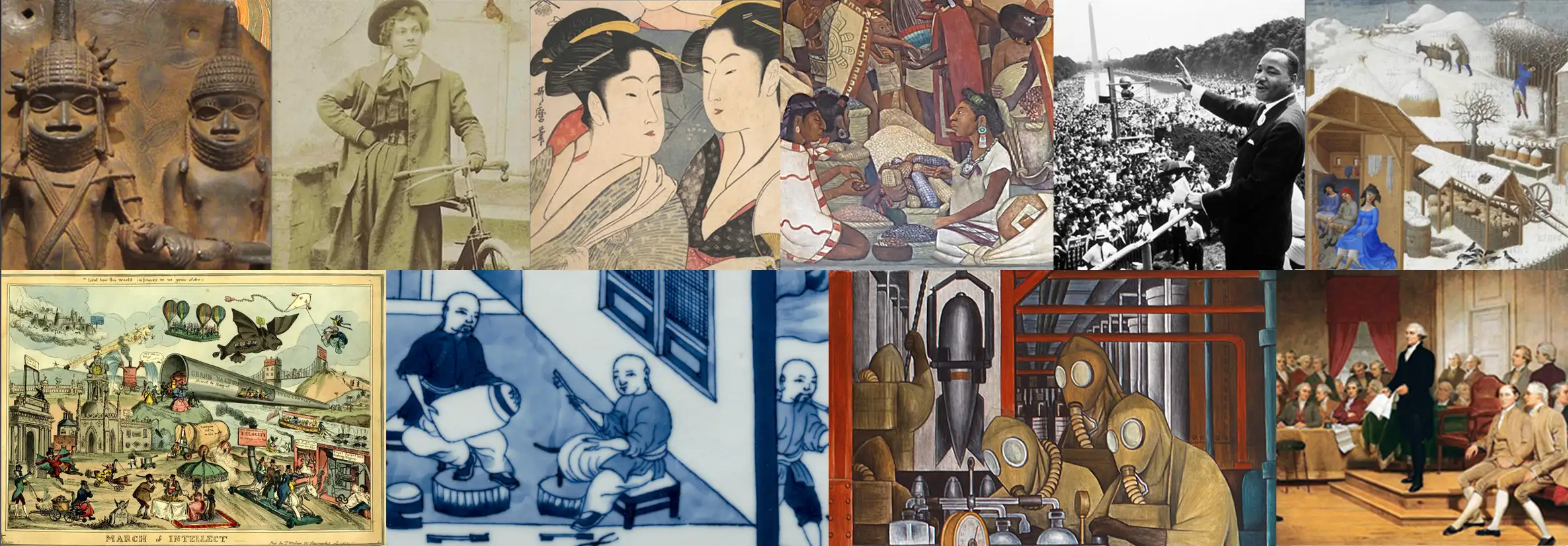

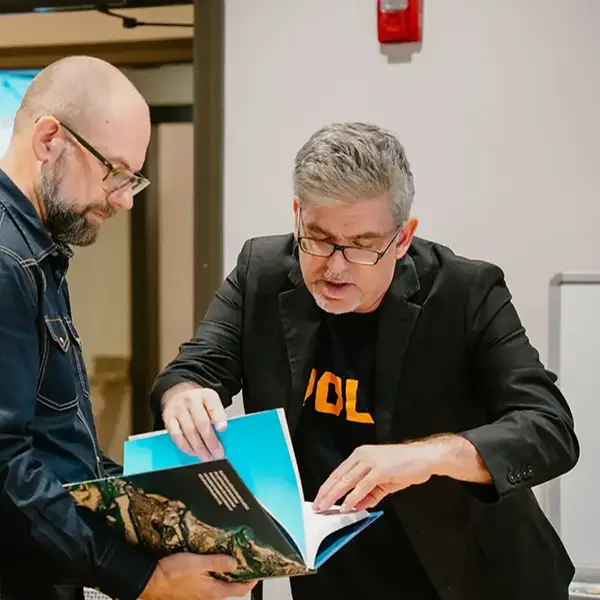

Red Dead’s History Launches with Film Premiere, National Coverage

Tore Olsson’s innovative history class inspired by the popular “Red Dead Redemption” video game series has been a hit with Big Orange students for the past few years. He now launches his new book inspired by the class, Red Dead’s History: A Video Game, An Obsession, and America’s Violent Past.
The book is already attracting national attention. Olsson and Roger Clark—who plays the lead role in Red Dead Redemption II and narrates the book’s audio edition—spoke and signed copies of the book and the game during this summer’s San Diego Comic-Con, one of the largest annual popular-culture events in the world.
“Participating as a speaker at Comic-Con was truly dreamlike,” said Olsson, associate professor and director of graduate studies in the UT Department of History. He and Clark spoke to a packed room of around 480 people during a panel session. “We answered thoughtful audience questions about college teaching, how video games can be a gateway to serious learning, and how questions of race and gender are subjects becoming more central to game narratives. Though I’ve given many public talks before, I’ve never seen a more rapt audience.”
More recently, the Wall Street Journal reviewed Red Dead’s History on the front of its book section, calling the book “innovative and highly engaging.” The Chronicle of Higher Education shared the story of how the class and the book “made history cool again.” The cable news channel C-SPAN will have a camera crew at Olsson’s book launch event at 6 p.m. Thursday, August 15, at the East Tennessee History Center. The event will also feature the premiere of the Land Grant Films documentary about his “Red Dead History” class.
Like the class that inspired it, the book examines how well the “Red Dead” games fare as recreations of history, exploring the real violence and political turbulence between 1870 and 1920, and what can be learned to understand contemporary American culture.
“Red Dead Redemption II, like most best-selling games today, places violence front and center to its entertainment formula,” said Olsson. “The America of the late 1800s was indeed a violent place—yet for different reasons than shown in the video games.
The game usually offers a stereotypical “wild west” style of competition involving violence: bullets fly during robberies, over personal grudges, or from too much whiskey.
“Real American violence was instead usually wound up with big social dilemmas,” said Olsson. “Particularly the questions of big business and its control over regular people, and whether the US would realize its post-Civil-War promise of racial equality. These were hotly contested issues, and ones that often spurred bloodshed.”
Many elements in the video game are inspired by real-world people and places. The city of Saint Denis, for example, is a stand-in for New Orleans circa 1899.
“The game does a nice job capturing the architecture and the human diversity of the city, but it falls short on many other questions,” said Olsson. “In the book, I explore the place of Italian immigrants within the city, and what it looked like when outlaws and the police traded fire. On both topics the game diverges from the reality of turn-of-the-century New Orleans.”
The book follows a similar format to Olsson’s class, looking at different geographic regions and key thematic topics within each. In “The West,” Olsson discusses cowboys, railroads, and the Pinkerton agency. In “The Deep South,” he looks at the history of the Ku Klux Klan, chain gangs, and women’s suffrage.
Olsson wanted the book to be accessible and engaging to a wide, non-academic audience and wrote it with storytelling in mind, often infusing it with his teaching persona and voice, resulting in a more conversational approach that he says might give students who took his class some “déjà vu” while reading it. Still, it gave him the chance to delve much deeper into the subjects than he could in a classroom setting.
“With the book there’s no exam at the end of the semester, so I could take more liberties in layering new information without worrying about what students could retain for an exam,” he said. “The book is in many ways even richer in content than the class.”
By Randall Brown

Tore Olsson in ‘The Conversation’: Why I turned the ‘Red Dead Redemption II’ video game into a history class on America’s violent past


Uncommon Courses is an occasional series from The Conversation U.S. highlighting unconventional approaches to teaching.
Title of course:
Red Dead’s History: Exploring America’s Violent Past Through the Hit Video Game
What prompted the idea for the course?
This course was born during the COVID-19 pandemic. Confronting the lockdowns of 2020 and uncertain months spent at home, I rekindled a high school hobby that I had neglected for two decades – video gaming.
One of the first games I picked up was “Red Dead Redemption II,” set in a fictionalized America of 1899. The game follows the Van der Linde gang, a diverse crew of idealistic outlaws, as they flee authority in an increasingly ordered and hierarchical world. Since its 2018 release, the game has sold more than 64 million copies, making it the seventh on the list of all-time bestselling video games – and the only historically themed one on the list.
While video games had been a mindless pastime in high school, this time around I was playing as a professor who specialized in U.S. history since the Civil War. And though that made me a far more critical gamer, I was also genuinely surprised at how often RDRII – as it is often called – alluded to major topics that historians have spent generations debating.
These topics include corporate capitalism, settler colonialism, women’s suffrage and the inequalities of race in an era that Mark Twain had called the “Gilded Age” – a period where the dazzling wealth of a small handful sharply contrasted with the misery of common people. These weighty topics were often on the game’s sidelines, rather than at center stage – but they were present nevertheless.
It wasn’t long into my playthrough that an epiphany struck me. Given how wildly popular this game was with college-age Americans, why not try teaching a serious history course that used the fictional content of the games as a springboard to jump into some of the thorniest dilemmas of the American past?
The experiment proved a success. The course was wildly popular with students and also garnered wide media coverage for its unusual approach to teaching with pop culture.
Encouraged by this response, I’ve now adapted the course into a book for both gamers and history buffs around the world, titled “Red Dead’s History: A Video Game, An Obsession, and America’s Violent Past,” set to be released in August 2024. An extra bonus is that the audiobook version will be narrated by Roger Clark, who played RDRII’s protagonist.
What does the course explore?
Given the centrality of violence to the video game, the course seeks to understand what really spurred bloodshed in the United States between 1865 and 1920.
In RDRII, gunfire is usually sparked by personal grudges, robberies or the overconsumption of alcohol. But in Gilded Age America, it wasn’t so simple. Instead, broader social problems were the primary catalyst of violence. First, Americans fought over the emerging regime of corporate capitalism. Should new businesses like U.S. Steel and the Union Pacific Railroad, who wielded never-before-seen power and influence, dominate workers and consumers alike? Many resisted such an idea through protests, strikes and sometimes bloodshed.
Secondly, Americans came to blows over the unfulfilled promises of racial equality that were written into the U.S. Constitution after the Civil War. Especially in the South, where the vast majority of African Americans lived, the formerly enslaved and their descendants demanded inclusion in politics and a chance to progress economically. But many white Southerners resisted such efforts, often using terrorism to push their Black neighbors into subservient positions.
Why is this course relevant now?
American society in the late 19th century was ruptured by inequalities wrought by capitalism and race – and so is ours today. In the wake of Black Lives Matter and Occupy Wall Street, it’s wise that we look back at the long road that brought America to its contemporary dilemmas of racial violence and the gap between rich and poor. A handy way to open that conversation with young Americans is through video games – an industry that has now surged in value to eclipse both music and movies, and which might be the key to reaching this generation’s students, as studies are beginning to show.
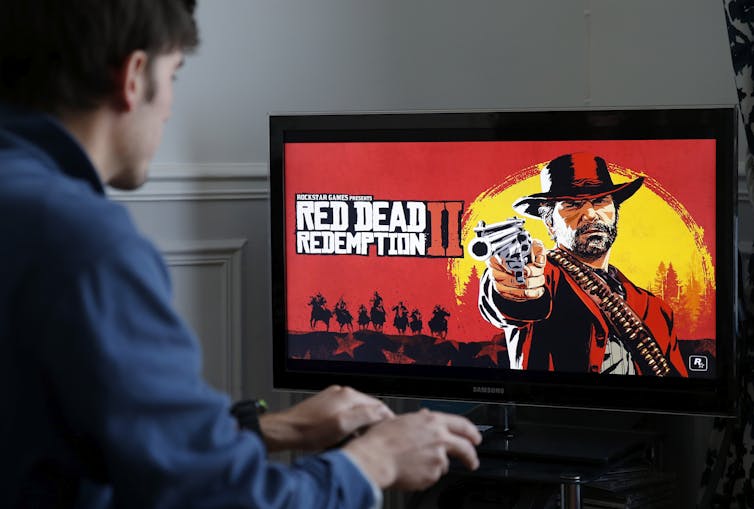
What’s a critical lesson from the course?
One key lesson is about the city of New Orleans, fictionalized in RDRII as “Saint Denis.” In the game, the outlaw protagonists trade fire with the city’s blue-coated policemen following a botched bank robbery, leaving bodies in the streets. Few gamers could guess that a similarly bloody firefight with the police riveted the real city in 1900, just a year after the game is set, leaving seven officers dead. Yet here the outlaw was a Black man, Robert Charles, who took a violent stand against police abuse and the emerging system of Jim Crow segregation.
In response to his attacks on the police, white mobs roamed the city and indiscriminately killed Black civilians. Therefore, the explosion of violence in New Orleans was produced not by simple banditry but by one of America’s towering social dilemmas.
What materials does the course feature?
I frequently begin course sessions with a brief video cutscene or gameplay footage from RDRII, before we dive into the actual history that the games represent – or sometimes, misrepresent. For reading, students dive into scholarly monographs such as historian K. Stephen Prince’s “The Ballad of Robert Charles”, on the violent dilemmas of race in New Orleans. They also read a range of original sources, such as cowboy memoirs, train schedules and a Texas newspaper from 1899.
What will the course prepare students to do?
Anyone who has taken my class – or read my new book – will know that the big social problems we are wrestling with today have deep roots, and took their modern shape during the same 1865-1920 period that is memorably captured in RDRII. They’ll also become much more discerning consumers of digital media, and games in particular; they’ll be better able to assess and critique representations of history on the digital screen.![]()
Tore Olsson, Associate Professor of History, University of Tennessee
This article is republished from The Conversation under a Creative Commons license. Read the original article.

Remembering Professor Bruce Wheeler (1939-2023)

Tuesday, April 9, the UT Department of History and the Knoxville History Project will join forces to honor the late Professor Bruce Wheeler. Wheeler joined the history department in 1970 and served our campus and community for more than four decades.
The program’s speakers will recognize his many accomplishments. He was a distinguished historian who wrote an important history of Knoxville; he was an engaging and innovative teacher beloved by a generation of UT students; and he generously contributed his time to help improve history education in East Tennessee public schools. During his long career, he was recognized with numerous teaching awards, and served as the head of the University’s Honors Program before his retirement in 2003.
Hosted by Jack Neely of the Knoxville History Project, the free public program will be held in the upstairs room at Maple Hall, 414 S. Gay Street, at 6 p.m. Tuesday, Apr 9, 2024.
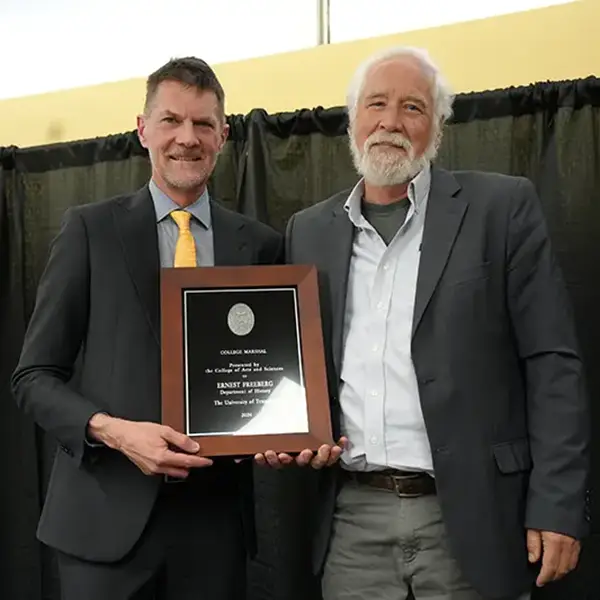
Freeberg Named 2023 William and Vicki Brakebill College Marshal
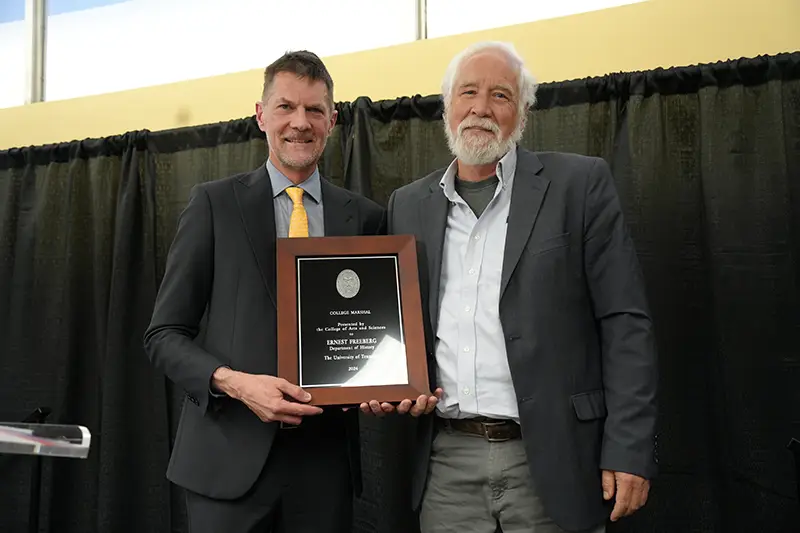
Ernest Freeberg, professor of history, was named the 2023 William and Vicki Brakebill College Marshal during the UT College of Arts and Sciences Faculty Convocation. The William and Vicki Brakebill College Marshal Award is the college equivalent of the university macebearer and is, therefore, the highest college honor awarded to a member of the faculty.
Freeberg stepped onto the UT campus in 2003 and began his 20+ years as a Volunteer. His long standing service to our college and the university, as well as his record of outstanding scholarship is why we honor him with the William and Vicki Brakebill College Marshal Award award this evening. He served as department head for history from 2013 until 2022, and holds the titles of both Beaman Professor and Distinguished Professor of the Humanities.
His research has been supported by grants from the American Council of Learned Societies, the Huntington Library, Newberry Library, and others. His two most recent books, A Traitor to His Species: Henry Bergh and the Birth of the Animal Rights Movement and The Age of Edison: Electric Light and the Invention of Modern America are notable not only for their scholarly excellence, but also accessibility to a general audience, who he knows well from his several years on the board of the Knoxville History Project.

Bauer, Sanft Honored for Research Excellence
Brooke Bauer, assistant professor of history, and Charles Sanft, professor of history, received awards for excellence in research during the 2023 College of Arts and Sciences Faculty Convocation.
Brooke Bauer, Assistant Professor
Excellence in Research & Creative Achievement Awards: Early Career
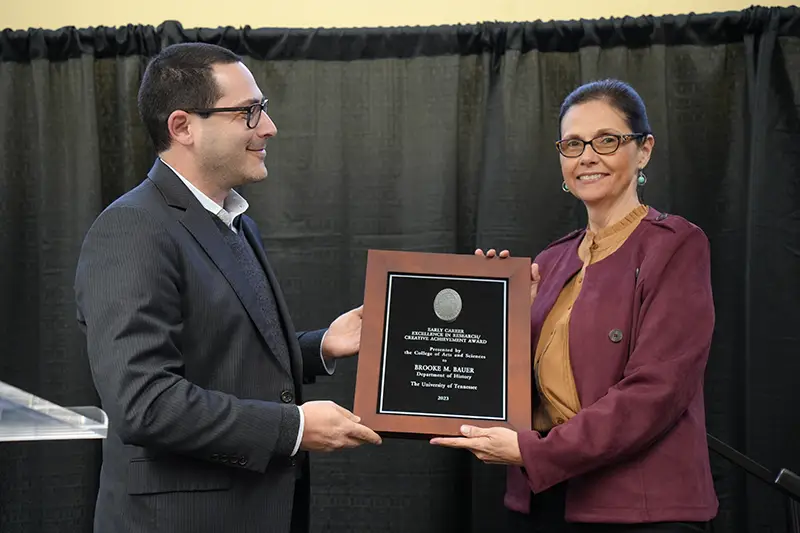
Bauer’s book, Becoming Catawba: Catawba Indian Women and Nation Building, 1500-1940, published in November 2022, won three book prizes in 2022-2023. The South Carolina Historical Society, the American Society for Ethnohistory, and the Berkshire Conference of Women Historians have all lauded its innovative interdisciplinary methodology and its deeply felt narration of Catawba women’s struggle for survival and identity.
Bauer has now embarked on an exciting research trajectory, co-authoring a book that explores how the histories of tribal nations are represented (and misrepresented) in museums and historical sites, among other projects. She has demonstrated remarkable originality and nuance in the histories she researches and writes. These traits are recognized with this Early-Career Research Award.
Charles Sanft, Department of History
New Research, Scholarly and Creative Projects in the Arts & Humanities

Sanft is working on a fascinating book project, Twenty Poems from Dunhuang. This work focuses on a unique set of ninth-century manuscripts describing the literal and metaphorical landscapes of a desert oasis town in northwestern China.
The significance of Sanft’s project is not simply bringing rare early Chinese medieval texts to a twenty-first century audience, but also his interdisciplinary approach. He examines these poems as historical sources, as literary imaginings, and as material objects. While in Dunhuang, he intends to visit places identified in the poems to gain experiential understanding of their relative locations and environmental characteristics.
Weaving these insights together in the introduction to the poems and then in his commentary on each individual poem will offer readers a remarkably textured analysis of these short, but powerful, texts.
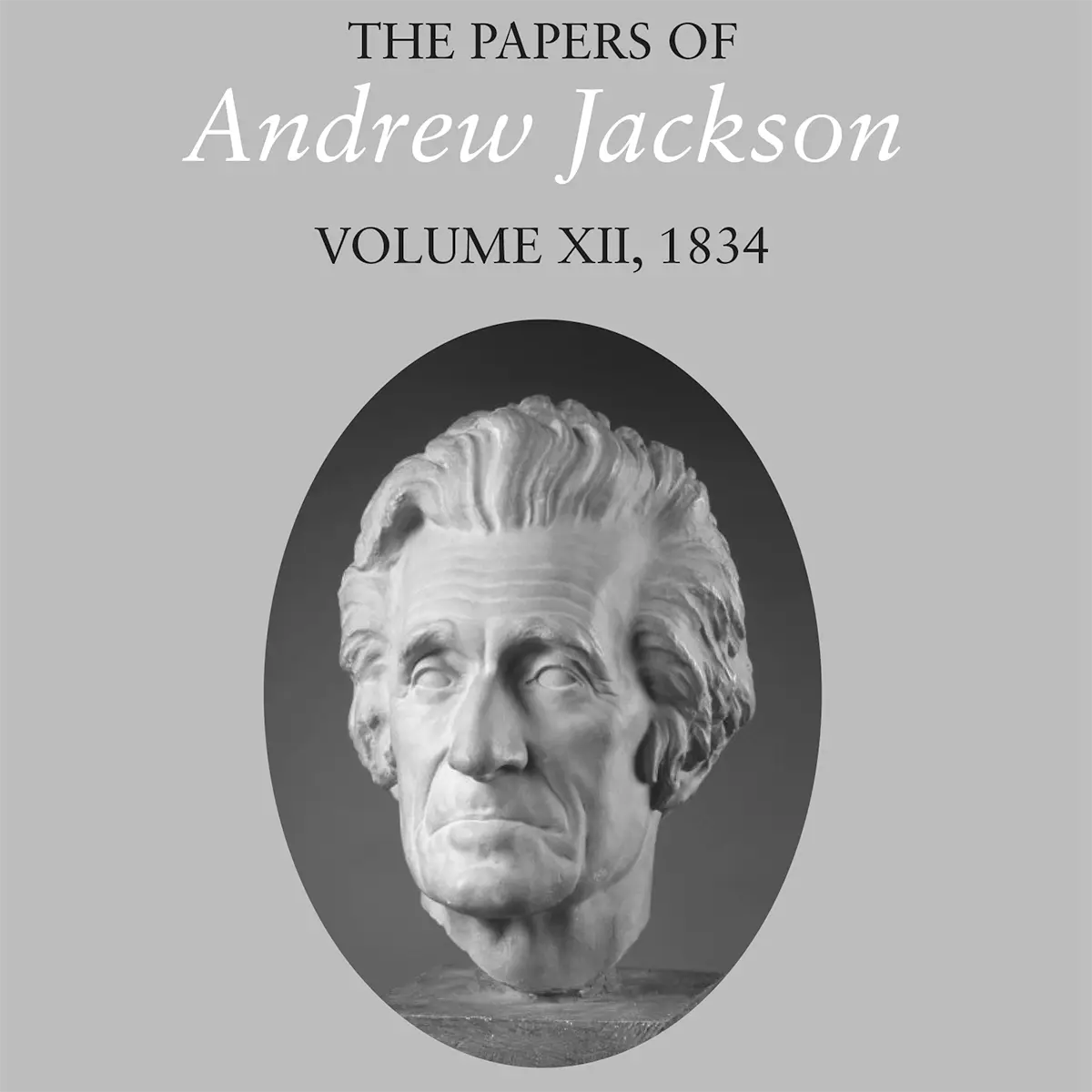
UT History Department Documents Key Year in Andrew Jackson’s Presidency
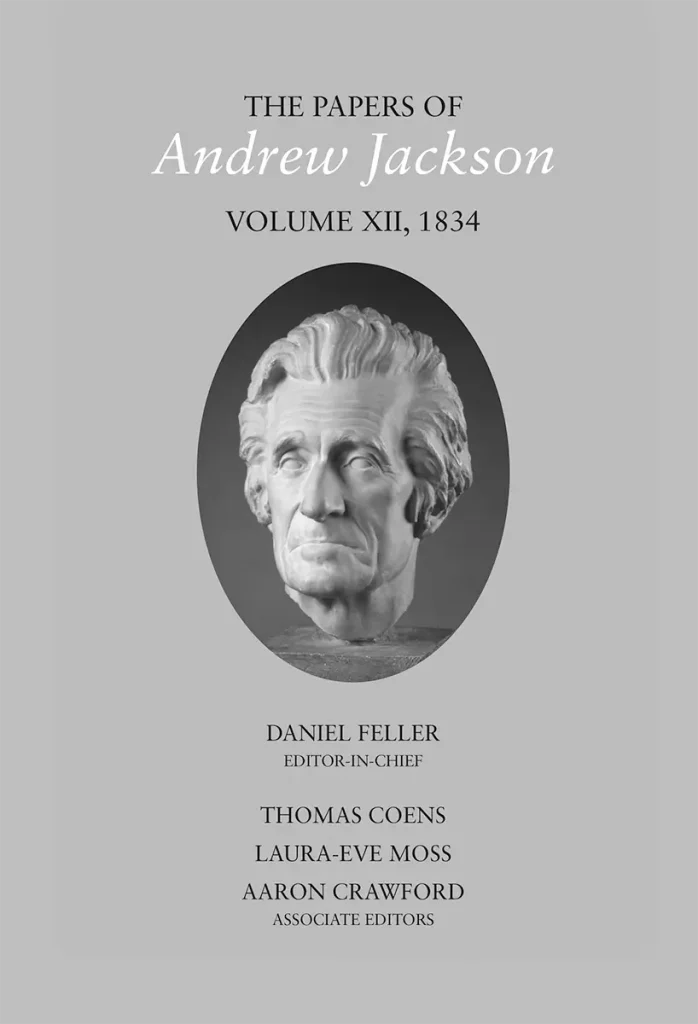
In partnership with UT Press, the UT Department of History has published the 1834 volume of The Papers of Andrew Jackson.
“For Jackson, 1834 was the year a controversy that had smoldered throughout his first five years as president of the United States reached a point of crisis,” said Daniel Feller, chief editor of the papers project.
The controversy concerned the Bank of the United States, an institution incorporated by Congress to head the nation’s financial system. Believing that the Bank corruptly privileged “the rich and powerful” over “the humble members of society—the farmers, mechanics, and laborers,” Jackson had set out to destroy it, first by vetoing a renewal of its charter and then by pulling the government’s money from its vaults. For this, the United States Senate censured Jackson—the only time in our history that has happened. Jackson, unbowed, returned a scathing protest, asserting the president’s authority to act as “the direct representative of the American people.” Privately he took to calling the Bank “the golden calf” and “this whore of Babylon.”
As the new volume shows, the Bank War was one of many controversies roiling Jackson’s presidency in 1834. Throughout the year Jackson pursued his aim of compelling eastern Indians to remove west of the Mississippi. In May the Chickasaws, under relentless pressure, signed a removal treaty. But brazen frauds complicated Jackson’s scheme to induce Creek emigration from Alabama, while the Cherokees, led by principal chief John Ross and backed by many white sympathizers, stood fast in resistance.
In 1834 Jackson continued his longstanding effort to pry the province of Texas loose from Mexico. Other matters engaging Jackson included corruption scandals in the Post Office Department and at Mississippi land offices, fractious disputes over rank and seniority among Army and Navy officers, and a fire that gutted Jackson’s Hermitage home in Tennessee.
These stories and many more are told in The Papers of Andrew Jackson: Volume XII, 1834. Presenting more than 500 original documents—public and private letters, memoranda, and official papers—in full annotated text, the volume is the latest installment in an ongoing series that has been called “the gold standard of historical documentary editing.”
Volume XII is the sixth and last produced under the editorship of Daniel Feller, now Distinguished Professor Emeritus at the University of Tennessee, Knoxville. Associate Editors Thomas Coens and Laura-Eve Moss are UT research faculty in history. The index was completed under Michael Woods, Feller’s successor as UT history professor and Jackson editor. Financial support was provided by the UT College of Arts and Sciences as well as the National Endowment for the Humanities, the National Historical Publications and Records Commission, the Tennessee Historical Commission, and the Watson-Brown Foundation.

Bauer’s ‘Becoming Catawba’ Earns Best Ethnohistory Award

Brooke Bauer, assistant professor in the Department of History, received the 2023 Erminie Wheeler-Voegelin Book Award from the American Society for Ethnohistory (ASE) for her book, Becoming Catawba: Catawba Indian Women and Nation Building, 1540-1840 (2023).
The award recognizes the best book in the field of ethnohistory published in the last year. Bauer’s work investigates Catawba women as central characters in the history of the Catawba people, examining their vital roles as women, mothers, providers, and protectors to reveal how they created and maintained an identity for their people and helped build a nation.
In citing the book’s award-winning qualities, the ASE wrote, “Bauer constructs a riveting narrative about how the communities, economies, families, and polities of Catawbas in the Carolinas became intricately entwined and maintained over three centuries of turmoil brought about by European and US colonialism. In so doing, she crafts not only a powerful counter narrative to male-dominated stories of colonial diplomacy and warfare, but also a narrative of national creation and building rather than one of decline.”
ASE also noted Bauer’s careful research, interdisciplinary source-mining, and convincing arguments forged an “entirely engaging” story, writing, “Bauer shows how to combine family research with archaeological and documentary research with huge rewards for specialists and non-specialists alike.”
Bauer’s award-winning exploration of this regional history exemplifies the Volunteer connection to community, illuminating the past to understand our world today.
